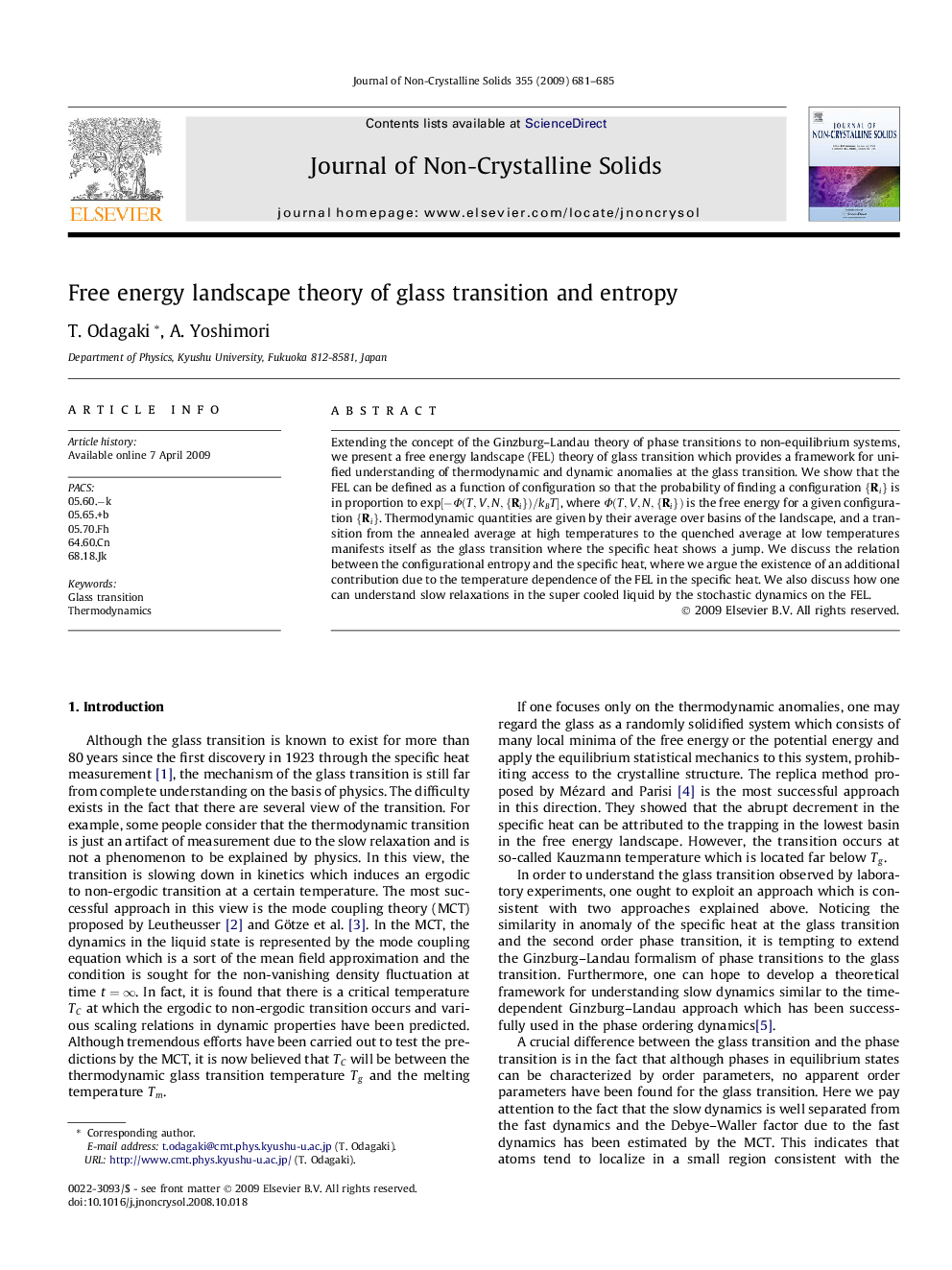| Article ID | Journal | Published Year | Pages | File Type |
|---|---|---|---|---|
| 1484234 | Journal of Non-Crystalline Solids | 2009 | 5 Pages |
Extending the concept of the Ginzburg–Landau theory of phase transitions to non-equilibrium systems, we present a free energy landscape (FEL) theory of glass transition which provides a framework for unified understanding of thermodynamic and dynamic anomalies at the glass transition. We show that the FEL can be defined as a function of configuration so that the probability of finding a configuration {Ri}{Ri} is in proportion to exp[-Φ(T,V,N,{Ri})/kBT]exp[-Φ(T,V,N,{Ri})/kBT], where Φ(T,V,N,{Ri})Φ(T,V,N,{Ri}) is the free energy for a given configuration {Ri}{Ri}. Thermodynamic quantities are given by their average over basins of the landscape, and a transition from the annealed average at high temperatures to the quenched average at low temperatures manifests itself as the glass transition where the specific heat shows a jump. We discuss the relation between the configurational entropy and the specific heat, where we argue the existence of an additional contribution due to the temperature dependence of the FEL in the specific heat. We also discuss how one can understand slow relaxations in the super cooled liquid by the stochastic dynamics on the FEL.
